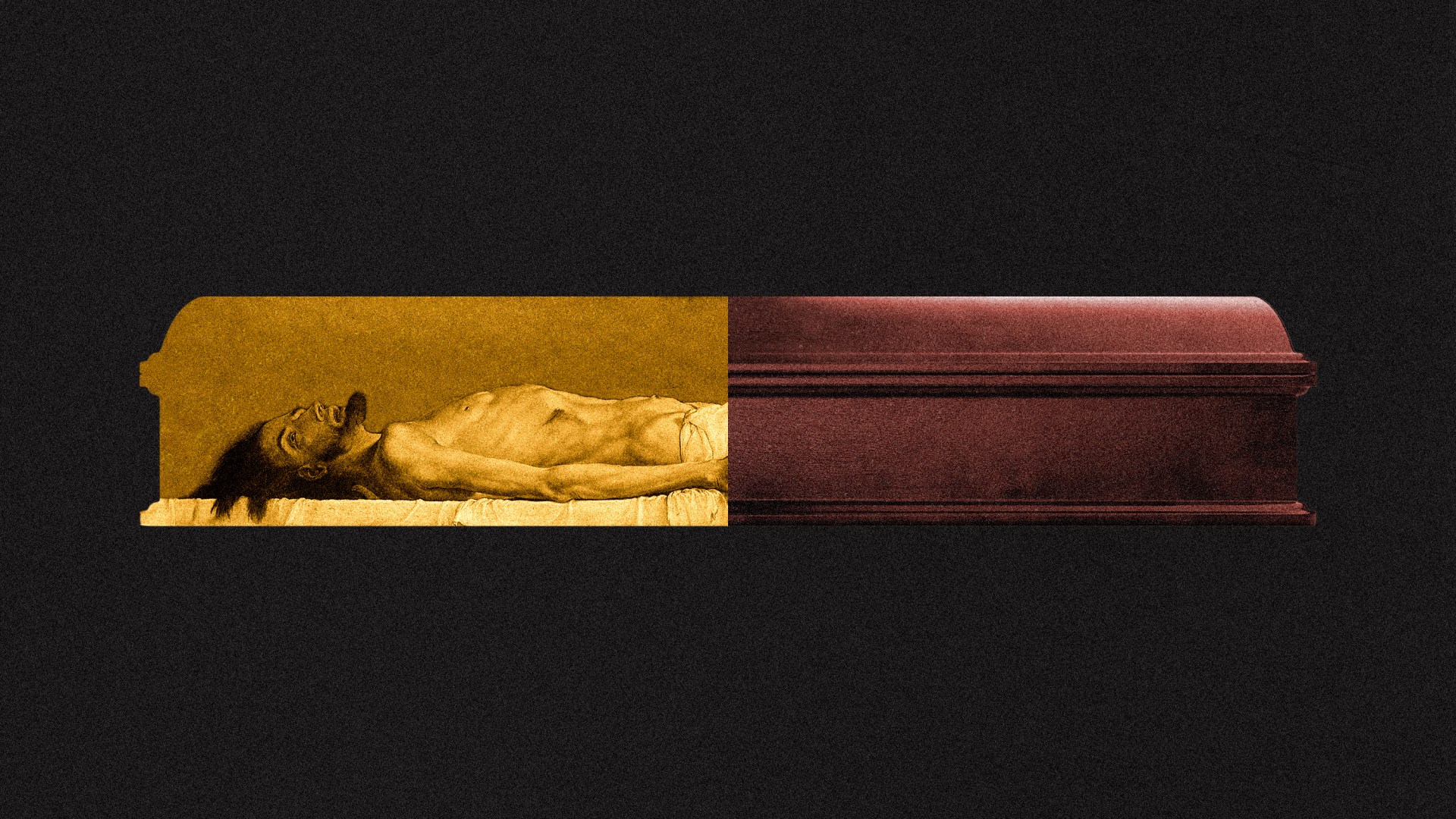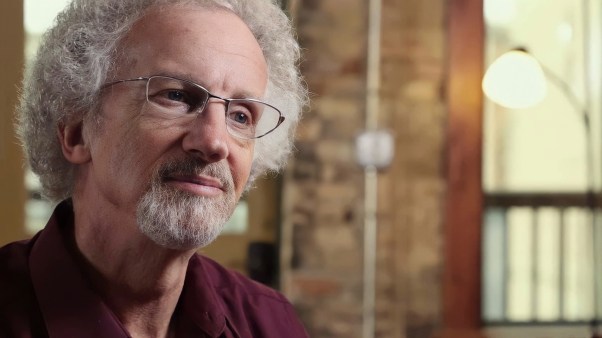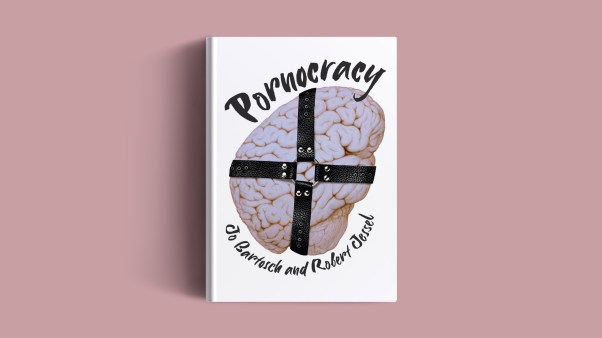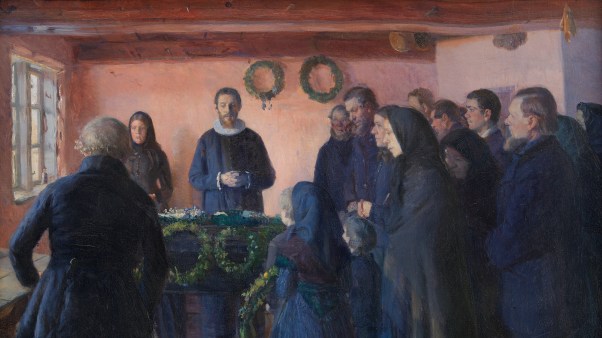My son’s first day of life was also my grandmother’s last.
She was among my closest friends and biggest cheerleaders, yet she died a thousand miles away as I sat holding my new baby boy. I cried both tears of joy and tears of sorrow that day, one after the other and all mixed together.
As my mind darted between the two hospital rooms, two loved ones, and two lives, I found myself pondering the question “What is our only hope in life and death?”
The answer, according to the first question of the Heidelberg Catechism, is this: “that I am not my own, but belong—body and soul, in life and in death—to my faithful Savior, Jesus Christ.”
Every year, on my son’s birthday and the anniversary of my grandmother’s death, this familiar liturgy rings in my head all day. Initially, the portion that stuck out to me most was “in life and in death” because of my simultaneous proximity to the beginning and the end of life—that my baby boy’s only hope in life and my grandmother’s only hope in death is Jesus Christ.
More recently, I’ve been struck by the preceding phrase, “belong—body and soul.” It seems intuitive that a Christian’s soul belongs to Jesus (Col. 3:3) in death as in life. Even many non-Christians affirm the persistence of our souls after death. But what does it mean for our bodies to belong to Christ in life and death? And why does it matter?
While mulling over these questions, I was reading John of Damascus, an eighth-century monk. In his work On the Orthodox Faith, the Damascene makes a claim I hadn’t noticed before:
For since both the body and the soul had their existence in the same way from the beginning in the hypostasis of the Word, and although they were separated from each other in death, each of them remained because they had the one hypostasis of the Word. (Compare with Peter Lombard’s Sentences, book 4, distinction 21, chapter 1.)
For the Damascene (and nearly everyone else in church history), death was defined as the separation of the soul from the body. Yet John of Damascus insisted that the Son of God was “inseparable from both” his body and his soul, even in death. In other words, he remained united to his human soul and body even after death.
Since the person of Christ is the person of the Son, his soul and body both depend upon him for their existence. If the Son’s soul or body were to exist independently from himself at any point, then the “person of Christ” and the “person of the Son” would refer to two different persons, which is a heresy known as Nestorianism, instead of one and the same.
In other words, the Son’s human soul and human body must depend upon and remain united to himself in both life and death.
Protestants, evangelicals in particular, have recently begun to (re)appreciate Holy Saturday—the day between Good Friday and Easter—and Christ’s work after his death.
“Christ dies a human death, as all humans do. His body is buried, and his soul departs to the place of the dead,” Matthew Emerson said in an interview for CT. “While he is there, he proclaims his victory over the powers of death. Then, in his resurrection, he achieves victory over death itself.”
In other words, in order to secure full victory over death for our salvation, the Son had to stay united to his soul in death. But it is equally important that the Son remained present and united to his body in those three days it laid dead in Joseph’s tomb.
Beyond being a theological factoid, why should this matter to us? I would argue there are at least three reasons this is significant for our faith, especially as we contemplate our hope in death.
The first reason this truth matters is because of the ancient dictum What has not been assumed is not healed. The early church father Gregory of Nazianzus crafted this statement to affirm the existence of Christ’s human soul. The logic goes like this: If human souls need healing, then the Son must assume a human soul. That’s because whatever part of humanity is not assumed by the Son—that is, united to his divinity—could not be healed from the effects of sin and death.
Therefore, if human bodies (more specifically, dead human bodies) need healing in the form of resurrection, then the divine Son must unite a human body to himself and must remain united to that body even after it is buried in the ground.
As Scripture says, Jesus took up our infirmities (Isa. 53:4), which must include the ultimate and final infirmity—death—if he is truly to heal all our diseases.
Not only must Christ assume every aspect of our human nature, but also he must experience every stage of human life, the church father Irenaeus observed. Jesus became an infant, a toddler, a teenager, a full-grown adult. And relevant for our purposes, he became a corpse. All this so that Christ could restore every part of our lives, including the lack of life in our bodies after death.
The second lesson is that God does not disdain our human frailty. The excommunicated church leader Nestorius was wrongly nervous about associating the Son with the womb of Mary. A divine being could not be associated with birth canals and blood, he thought.
Contrary to Nestorius, the gospel relies on the fact that God humbled himself to the point of gestation, birth, infancy, and death, even death on a cross (Phil. 2:8). But God the Son went even further by remaining united to his human corpse after it was buried—he was present in the cold, dark, and silent tomb. The God we worship does not disdain the fleshy pits of human life or death.
As Charles Wesley wrote, “’Tis mystery all! Th’Immortal dies!” He continues, “Amazing love! [H]ow can it be / That Thou, my God, should die for me?” It’s worth noting that this line has often changed in more recent versions to “That you, my king, would die for me”—potentially because they were nervous about associating the immortal God with death!
But we need not be nervous about picturing the divine Son in the borrowed tomb of Joseph of Arimathea. We can wholeheartedly declare that Jesus, the immortal God, died a criminal’s death with last-minute funeral arrangements. This profound theological truth should inspire a deep appreciation in us for the extent of God’s love demonstrated in the death of Christ (Rom. 5:8).
Last but not least, as Christ’s body is bound to God, so our bodies are bound to Christ in death. For just as the immortal Son of God lay dead in a tomb, present with his human body, God the Son will remain present with us as we too are buried one day in “borrowed”—that is, temporary—tombs (Ezek. 37:13–14). God is never absent or distant from the brokenhearted and grief-stricken (Ps. 34:18), nor does he forsake our souls or our bodies, even in death (139:8, 12).
As David wrote in the Psalms, “My body rests in safety. For you will not leave my soul among the dead or allow your holy one to rot in the grave” (Ps. 16:9–10, NLT). This is, in some sense, not literally true (Acts 2:29), since David’s dead body eventually rotted into dust.
So how can David—and how can we—sing this Psalm honestly? It is only because of Christ, the “holy one,” whom this verse prophetically pointed to. God did not leave Christ’s body to rot in the grave but rose him to life again, as he will raise us all on the last day (John 6:40).
Scripture assures us that our entire lives are “hidden with Christ” (Col. 3:3) and that this is not just a spiritual reality—our physical bodies are also united to him, from womb to tomb and beyond.
Because of this, we need not fear the decay of death. Regardless of the decomposing state of our physical bodies, Christ holds them together in himself. Whether our corpses turn to dust in concrete crypts, are separated limb from limb, or are engulfed in flames at the martyr’s stake, they remain united to Christ, whose body is united to the Godhead.
In summary, because the union between the Son and his humanity persists even after death, the union between Christ and his body, the church, persists even after our deaths.
So we need fear neither death nor dissolution, and we need not lose hope. God the Son shared in our humanity, body and soul, in life and in death, “so that by his death he might break the power of him who holds the power of death—that is, the devil—and free those who all their lives were held in slavery by their fear of death” (Heb. 2:14–15).
“For if we have been united with him in a death like his, we will certainly also be united with him in a resurrection like his.” (Rom. 6:5).
On a day in the church calendar when we recognize hope and anticipation in the midst of death, may we take heart in the grace of God, who became human to live and die on our behalf. God is not ignorant of what lurks behind the curtain of death, even if such ignorance brings us anxiety.
Rather than fear, I can hope that my grandmother’s body will ultimately not see decay but be raised with her Savior, to whom she belongs. Likewise, I can have hope when I consider my son’s future, not because his body is currently healthy but because of Christ.
One day, everyone, including our parents and friends, children and neighbors, will taste death. But as they descend into the grave, may we remember that it is a place God himself has known, a place where God himself is present (Ps. 139:8), and a place God has ultimately defeated.
We can all rest in peace knowing that in life and death, our souls and bodies belong to God.
Ty Kieser is assistant professor of theology, program director, and faculty in residence at Criswell College in Dallas.














